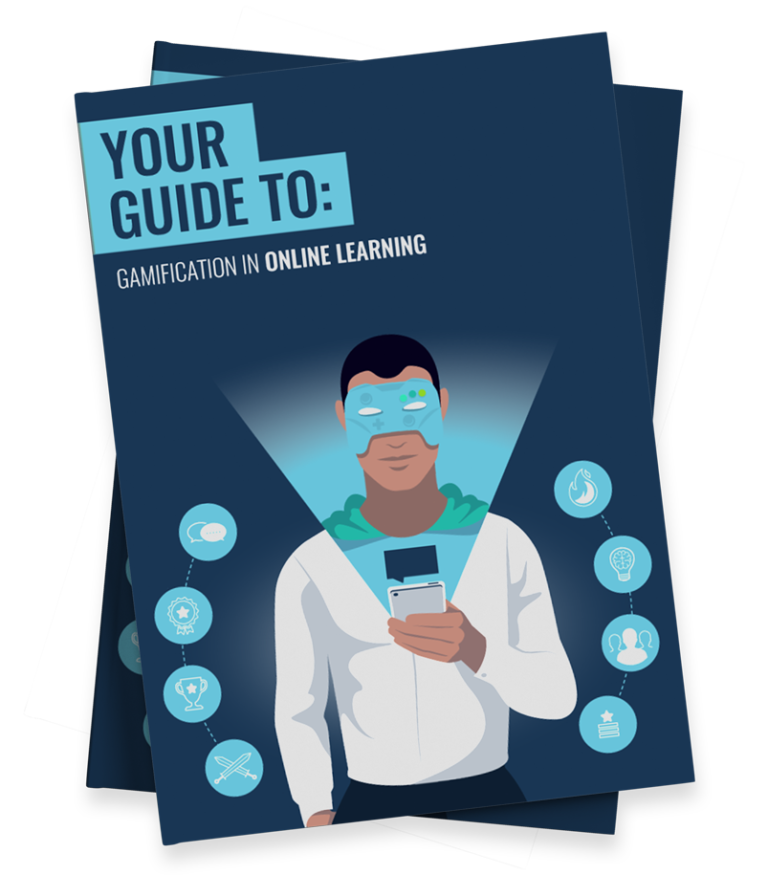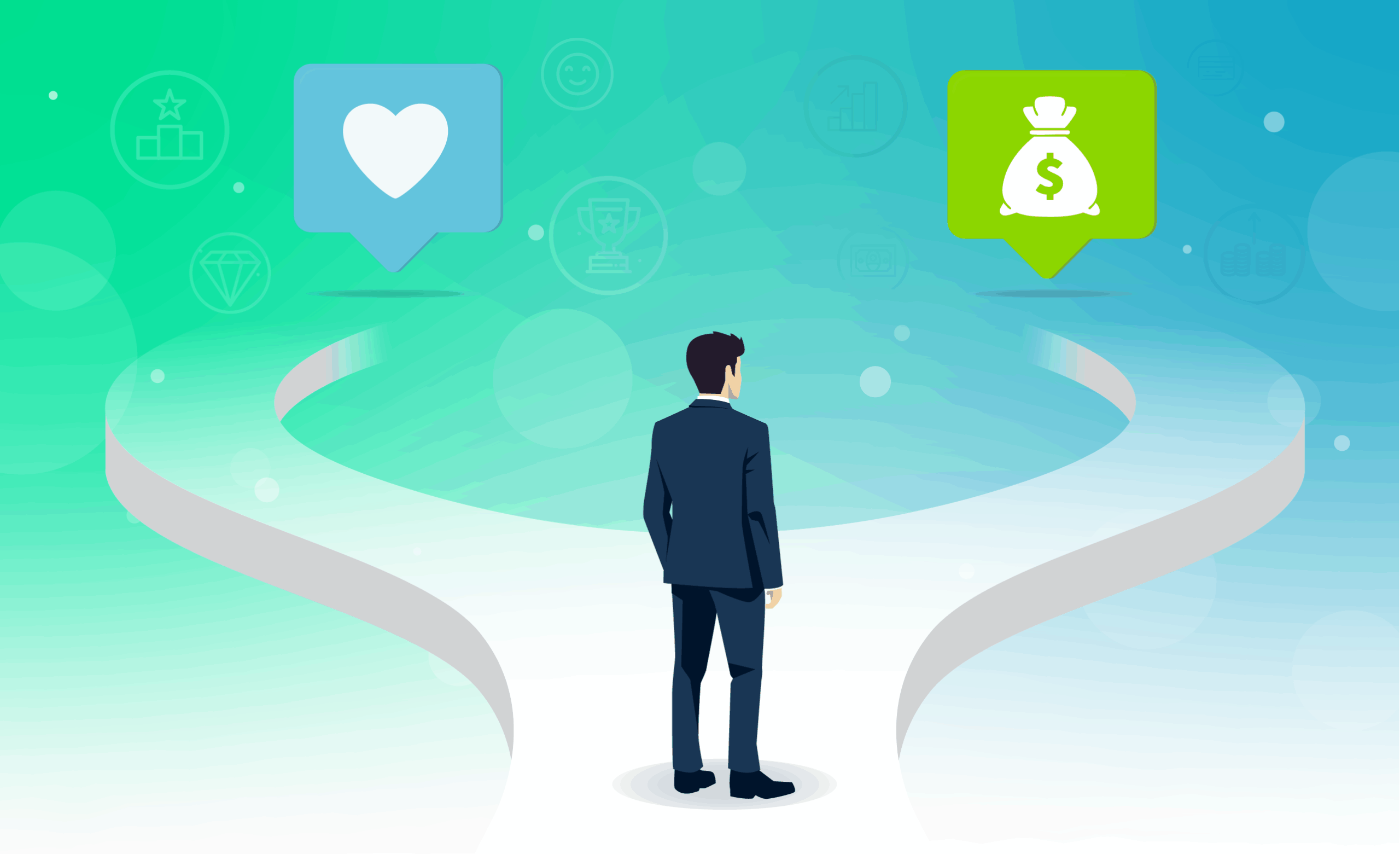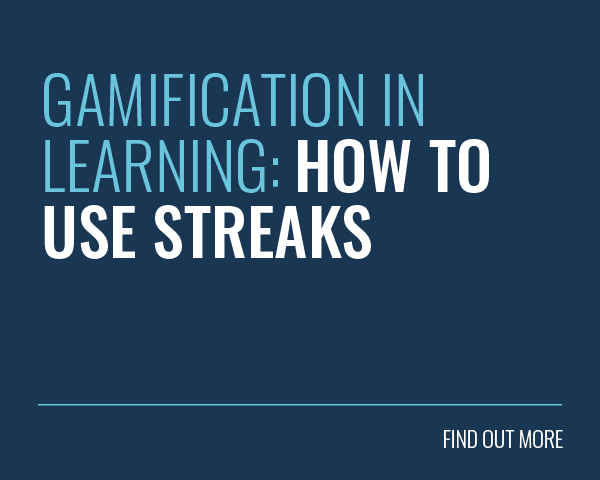
Welcome to our Mechanics Masterclass, where we’ll be lifting the lid on the gamification features and game mechanics that lead to a goldmine of learner engagement.
In the world of learning and development, boredom is a super villain. It crushes curiosity, drains motivation and annihilates engagement. Before long, this will have a telling impact on your learning outcomes.
You can’t expect to change behaviour or improve organisational performance if learners aren’t engaging with your training initiatives.
Thankfully, game mechanics can help you to turn the table. They transform your learning environment into an incentive-rich digital playground. Before long, your learners will be enthusiastically unlocking their full potential.
Gamification isn’t a silver bullet solution, but it is a research-backed approach. In fact, game mechanics have been shown to boost learner engagement by as much as 60%.
As a top gamified learning solution provider, we’ve seen the power of game mechanics first hand. And now we’re ready to share our knowledge. Let the games begin!
Gamification & Learning
Before we get into the nitty gritty, we should start with a definition. Gamification is the application of game mechanics to non-gaming scenarios in order to increase user engagement, happiness and loyalty.
Game mechanics excel at transforming daunting tasks into manageable and engaging experiences. Take your Fitbit, for example. This is more than an activity tracker. It helps you to embrace a more active lifestyle by transforming your daily step count into a gamified challenge.
The fun doesn’t stop there. Collecting air miles or loyalty stamps at your local coffee shop is a gamified experience. These incremental rewards act as powerful motivators, helping to foster ongoing engagement.
Generating learner engagement is no easy task. After all, your learners are busy. In fact, research shows that the typical employee only has 24 minutes to dedicate to learning each week. It’s up to us to make sure this is time well spent.
Fortunately, gamification can help to motivate, focus and engage your learners. This will increase learning uptake and ultimately lead to better outcomes. To achieve this, however, you need to have the right feature set in place.
12 Must Have Game Mechanics
Digital learning solutions such as learning management systems and learning apps need active and engaged learners. After all, your best-in-class training content counts for nothing if there’s no one there to consume it.
Game mechanics are an effective way of delighting and exciting your learners. With this in mind, we’ve curated our top 12 game mechanics, presented below. If you’ve got an engagement problem, then these gamification features could be the answer.
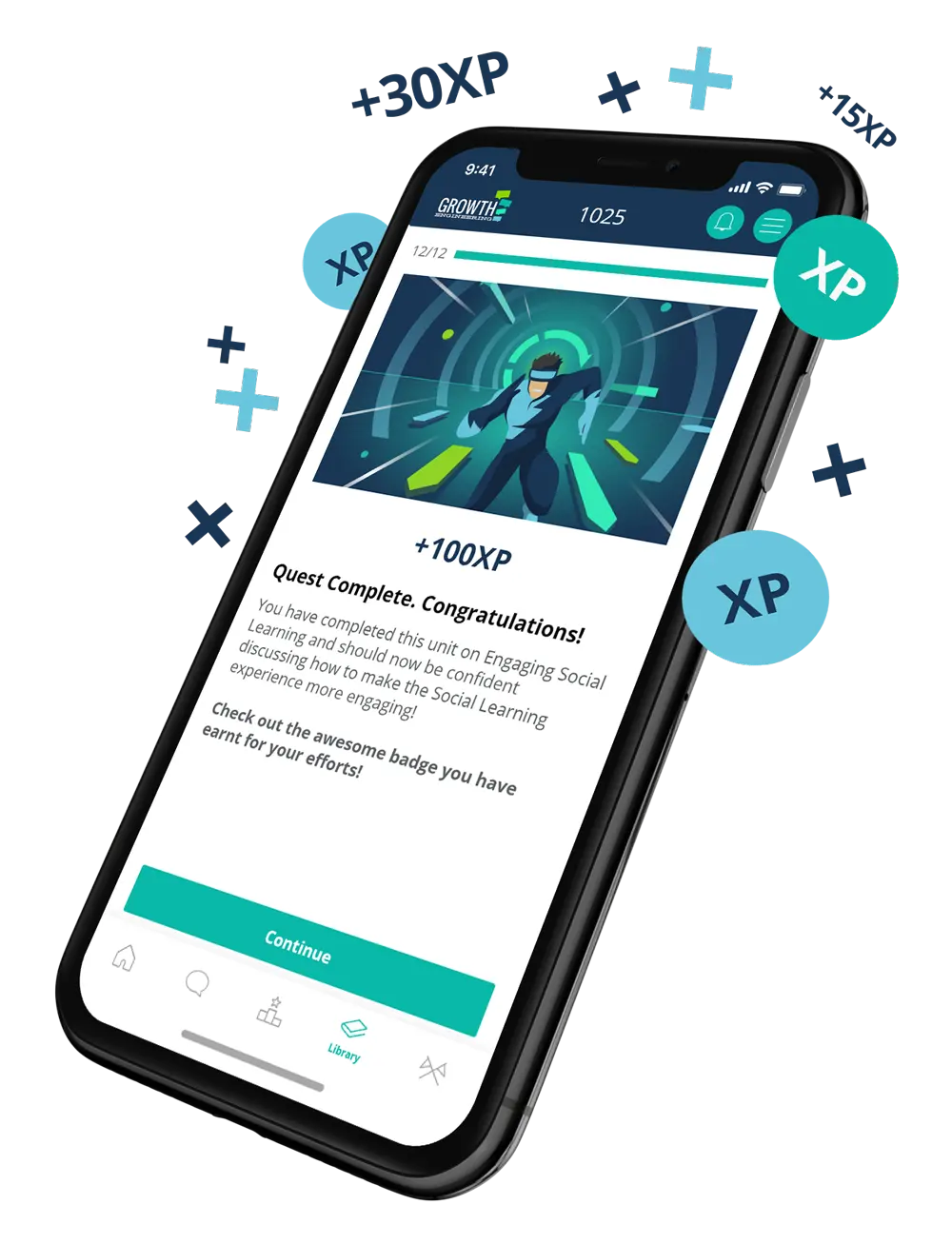
1. Experience Points (XP)
What’s the point of experience points?
In the gaming world, experience points (or ‘XP’) are used to reward players for completing objectives, overcoming obstacles and taking risks. As such, it’s easy to see how they could also be applied in a digital learning environment.
Your learners can collect experience points for completing learning tasks, exploring your platform and interacting with other users.
These points provide learners with immediate feedback and act as a measure of their progress. Studies show that this leads to the development of intrinsic motivation.
Furthermore, in some cases, accruing enough experience points will enable the user to level up (see below for more details). In a learning environment, this might grant the user access to new content or experiences.
→ Find Out More: How to Use Experience Points (XP) in Learning
2. Badges
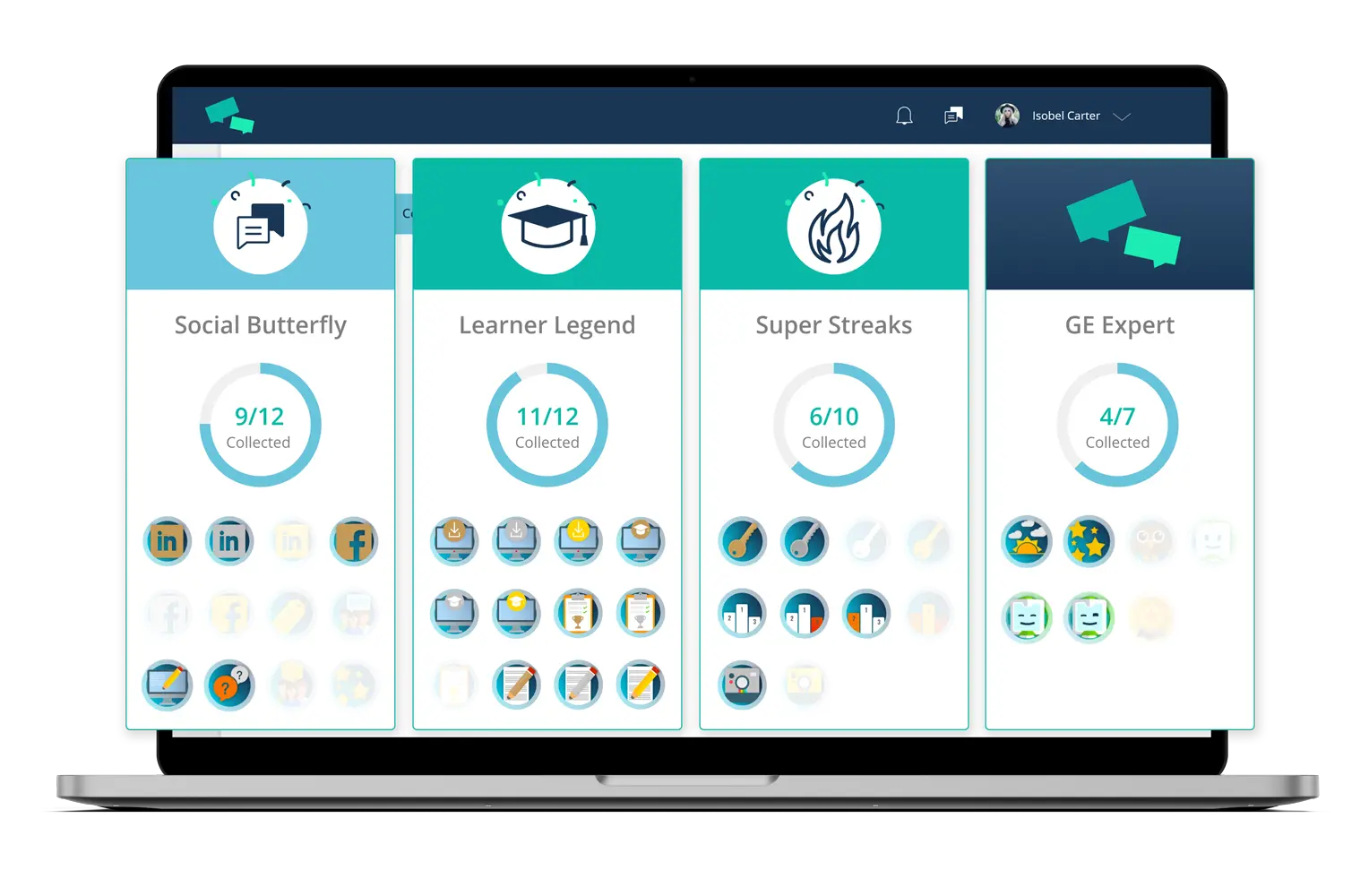
Badges aren’t just for birthdays. These digital accolades incentivise and reward actions that take place within your learning environment. Each badge typically has the following:
- A trigger: the user action that releases the badge.
- An image: the visual representation of the badge.
- And a description: the explanation of how the badge was earned.
This recognition feels good. For many, badges are a source of genuine pride. Perhaps that’s why 76% of business units agree that badges help to motivate employees to develop their skills.
After all, badges give your learners something to aim for. They also appeal to the collector within us all. This encourages learners to pursue their objectives and overcome any obstacles in their way.
→ Find Out More: How to Use Badges in Learning
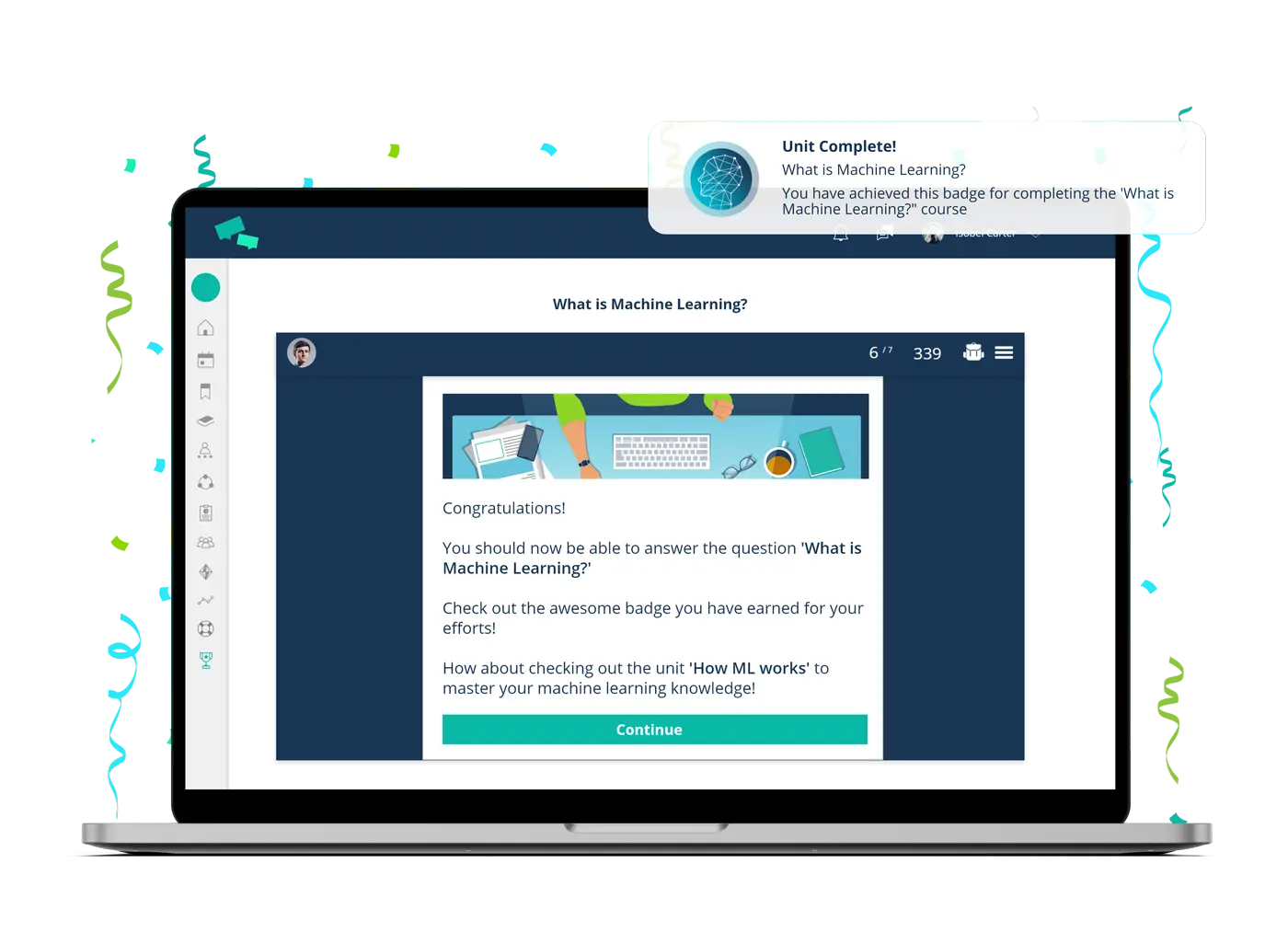
3. Achievements
In video gaming, achievements (or ‘trophies’) reward players for completing a meta-goal that exists outside the parameters of the game. For instance, you may get an achievement for completing a tutorial or playing for a set number of hours.
Achievements can also be awarded within a digital learning environment. For instance, on Growth Engineering LMS, you can configure a variety of triggers (the required action) and counts (the number of times the action needs to occur) to reward your learners. For example:
- Early Bird: Login before 7am
- eLearning Expert: Complete 5x eLearning units
- Social Superstar: Share 10x social posts
These achievement badges reward learners for exploring their learning environment and interacting with other users. Studies show that this is an effective way of engaging your learners. After all, a little recognition goes a long way.
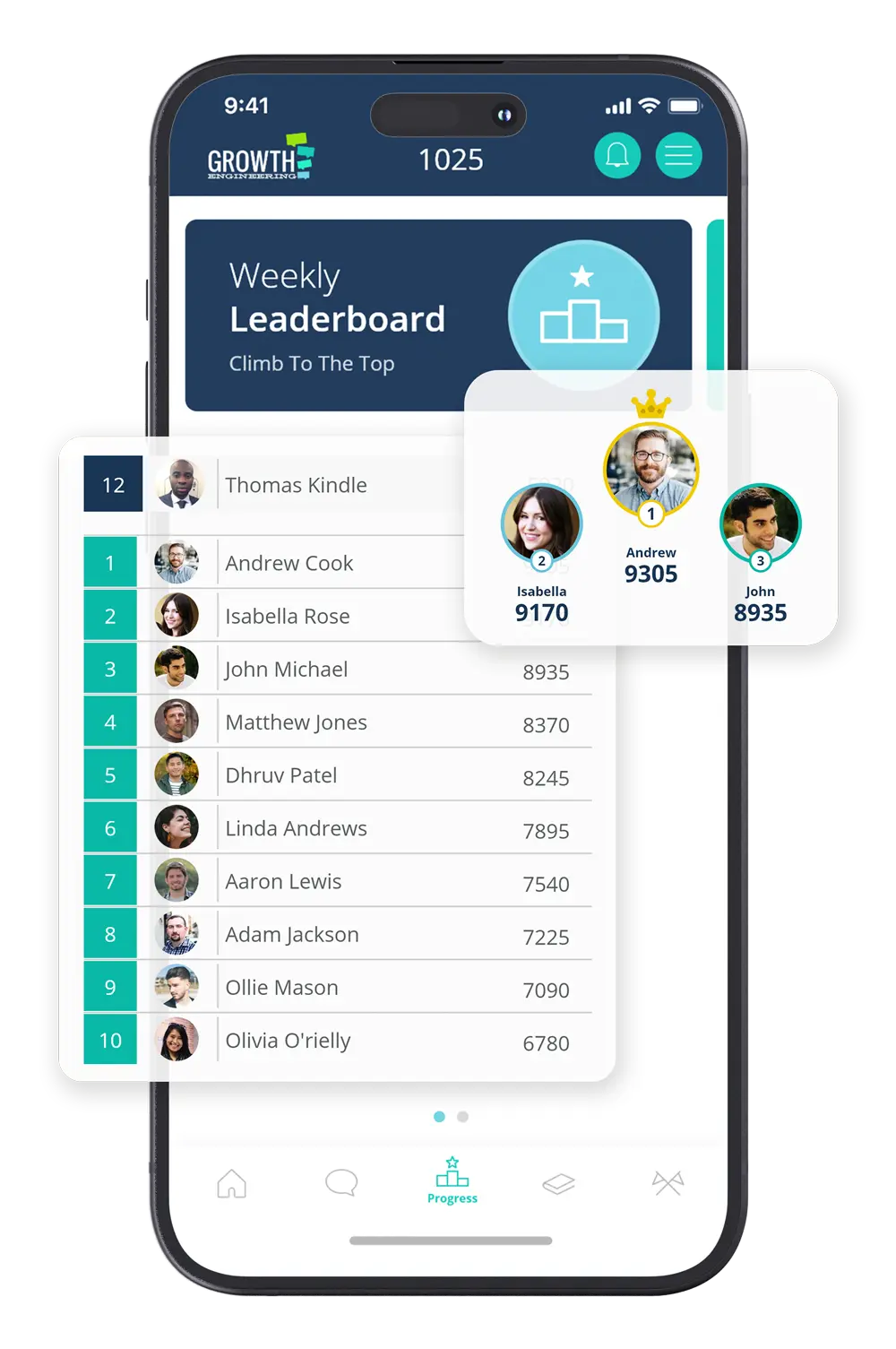
4. Leaderboards
Leaderboards are a real-time ranking system that showcase employee performance within your learning system. They grant your learners a sense of perspective that they might otherwise lack.
As a result, your learners can understand their progress, set new goals and supercharge their motivation levels.
Indeed, research shows that competitive environments typically lead to improved performance and faster reaction times.
Of course, leaderboards do have their detractors. For instance, they can be demoralising for new starters or those who have fallen behind.
To counteract this, we recommend introducing a ‘most improved’ leaderboard, or resetting your rankings every six months.
→ Find Out More: How to Use Leaderboards in Learning
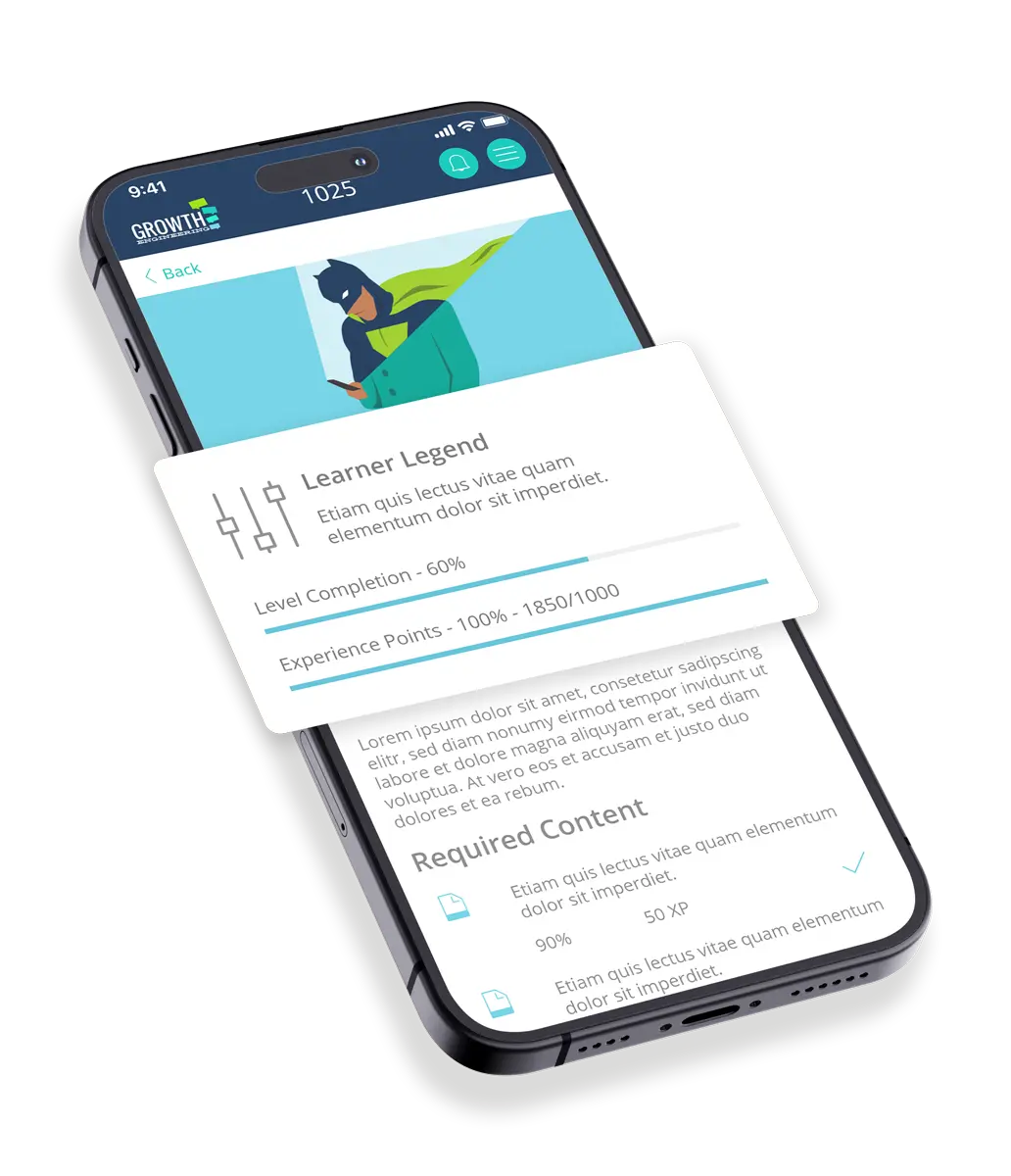
5. Levels
Levels provide a structured framework for learners to progress through the training material within your learning system.
This helps your learners to understand their proficiency. It also helps instructors to tailor their content to different skill levels.
Typically, your users will start at ‘Level 1’, which will grant them access to a specific set of content. Completing this content will enable them to ‘level up’ and access further learning experiences.
When implemented properly, challenge-based gamification can improve learner performance by 89.5%. It’s easy to see why. Levels provide your learners with both structure and motivation. Now that’s a powerful double act!
→ Find Out More: How to Use Levels in Learning
6. Progress Bars
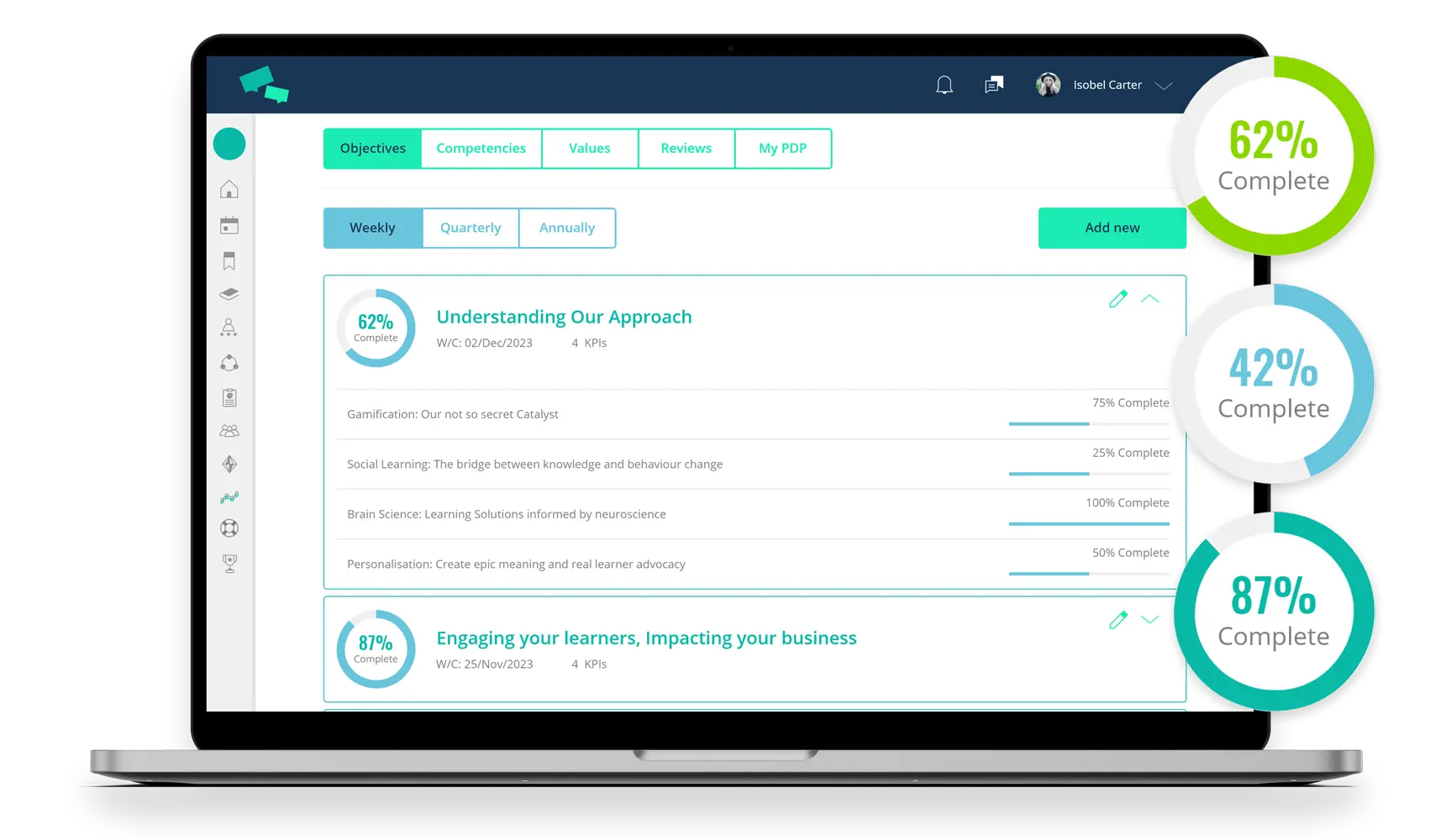
Progress bars provide a visual representation of the completion status of a particular task, process or goal.
They let us know how far away we are from completing our objective. You’ve likely come across numerous progress bars whilst browsing the web.
For instance, you’ll often see them when downloading a file, completing an online form or making your way through a checkout process. In the world of online learning, they’re useful for showcasing progress within a level or curriculum.
Ashwin Nandihalli, Director of Product Design at Byju’s Early Learn, aptly describes progress bars as the ‘tiny cheerleaders of user engagement’. Studies also show that progress bars help to drive efficiency and reduce user anxiety and uncertainty.
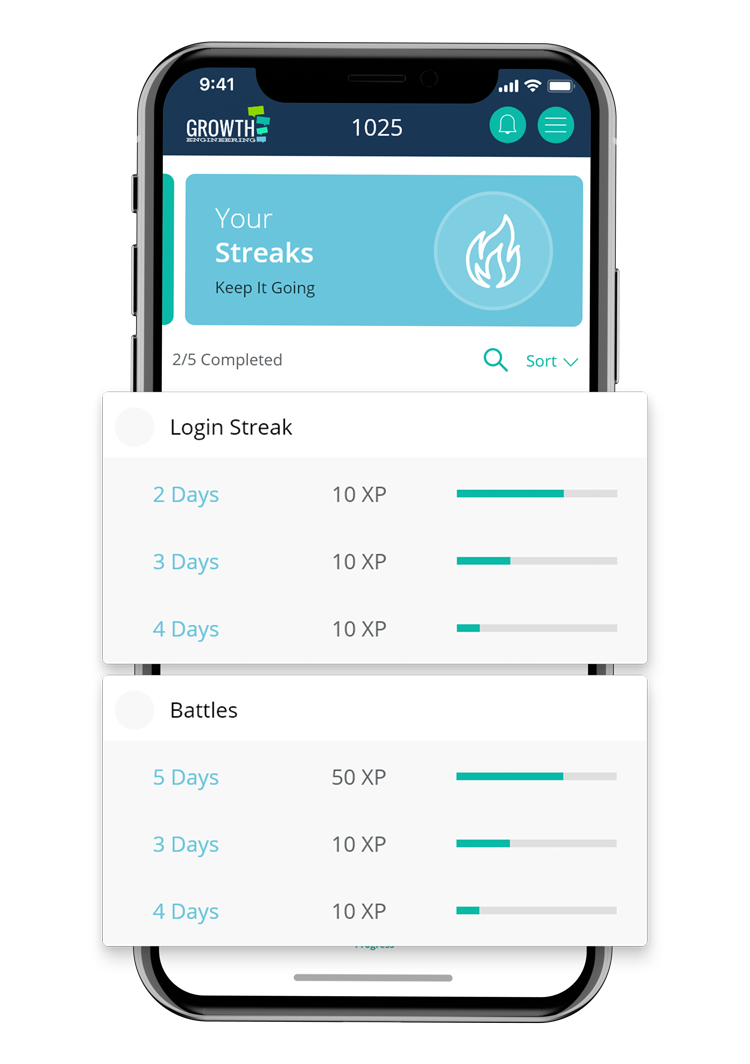
7. Streaks
Streaks transform learning into a habit. They’re a game mechanic that focuses on consistency. After all, a streak is something that happens over a period of time without break. For instance:
- Winning five games in a row
- Exercising every day for a month
- Not smoking for six weeks
In the context of learning systems, a streak may represent a consecutive number of days a user has engaged with learning materials or completed tasks.
Maintaining this streak acts as a motivational tool and helps to promote healthy learning habits.
Humans are loss averse creatures. We’re more motivated by the fear of losing something than the prospect of gaining something of equal value. This is just one of the reasons why streaks are so effective.
→ Find Out More: How to Use Streaks in Learning
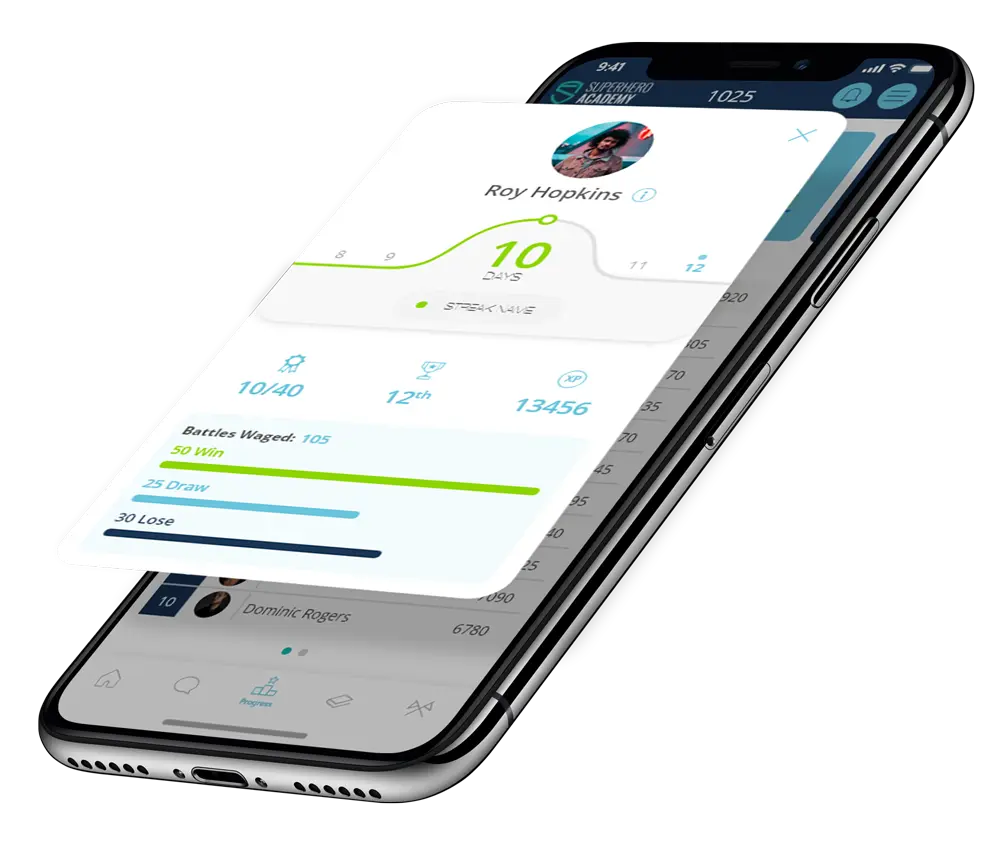
8. Scorecards
Scorecards are the central hub of your users’ gamified journey. They provide a visually engaging way for learners to track their performance within their learning environment.
They do this by summarising each learner’s gamified achievements to date. Your learners can then set themselves goals and decide upon their next steps.
For instance, the scorecard on Growth Engineering Learning App displays the learner’s badge count, XP tally, leaderboard position, battle results and eLearning completion. It also highlights their streak progress.
This summary helps to motivate and encourage your learners. In fact, well-structured gamified solutions have been shown to increase user engagement by 30%.
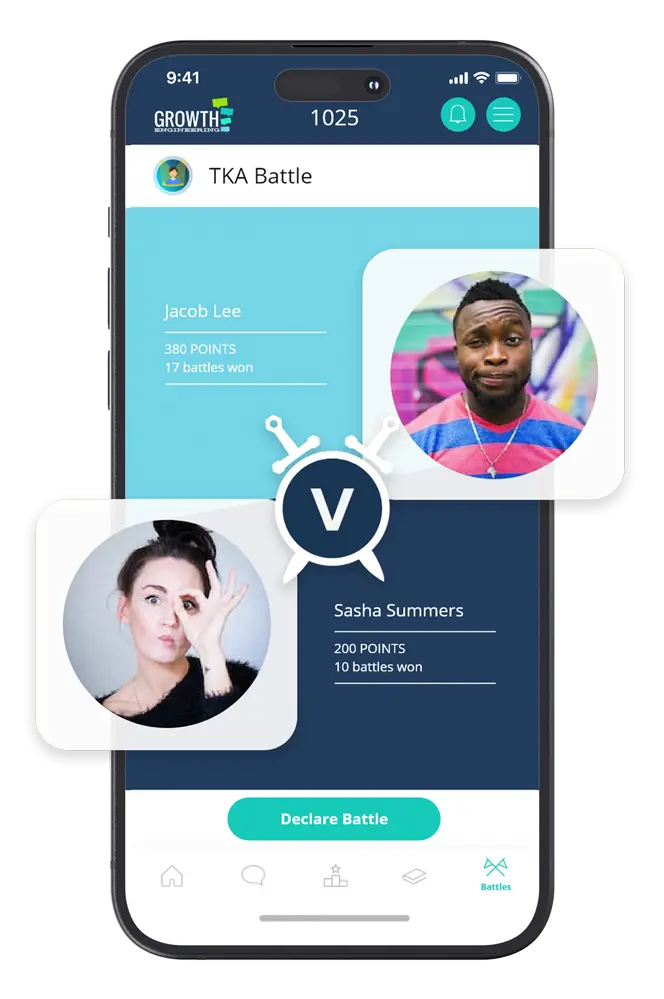
9. Knowledge Battles
Knowledge battles are a learning asset that’s unique to Growth Engineering (that’s us). They combine gamification with social learning to help drive real knowledge retention. They’re the perfect approach to help you overcome the forgetting curve.
Battles are learner-vs-learner quizzes. Learners challenge each other to answer questions in a penalty shoot-out format. The learner with the most correct answers is declared the winner. If it’s a draw, then the learner who answered their questions quickest wins.
We like competition. We also raise our game when we compete against people we know. According to a New York University study, runners who compete against a known rival run significantly faster (8 seconds faster per mile, in fact).
Battles tap into this psychological quirk by empowering your learners to select the quiz topic and who they’re competing against. The battle victor is then rewarded with XP, badges and bragging rights.
→ Find Out More: How to Use Battles in Learning
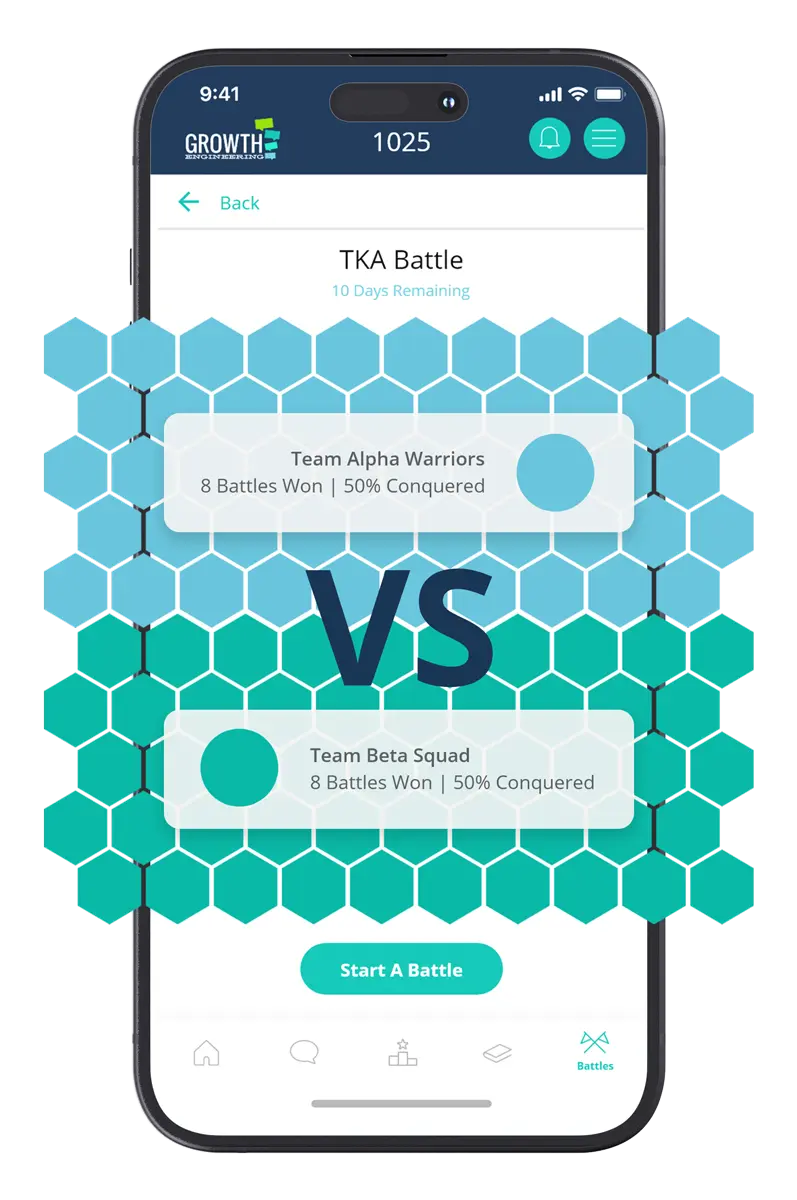
10. Squad Battles
Squad battles kick the excitement up a notch. With this approach, your learners are divided up into teams.
They’ll then battle it out in the usual way, except this time they’ll be recording wins and losses for their respective squads.
Each squad battle is visualised on a territory map. As learners record victories, they claim territory for their team. Once the countdown clock reaches zero, the squad with the most territory is declared the winner.
Collaboration can move mountains. In fact, collaborative teams report higher levels of engagement, higher success rates and decreased fatigue levels. We truly are better together.
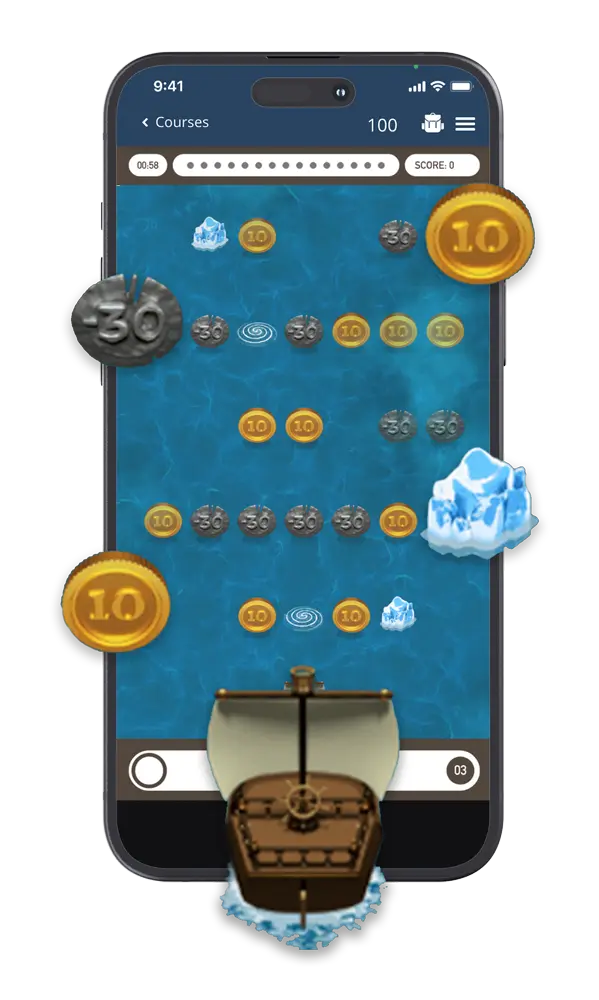
11. Learning Games
A learning game is any game designed to help people expand their knowledge. As such, strictly speaking, they’re not a game mechanic. They’re a full-fledged game after all. But we hope you’ll forgive us for including them on this list.
After all, they’re effective. As gamification expert Karl Kapp notes: “You should integrate learning games into your training programmes, because they’re engaging, they’re instructional and they give you great outcomes.”
What outcomes should you expect? Well, a study by the UC-Denver Business School shows that learning games drive:
- 11% higher factual knowledge
- 14% higher skill-based knowledge
- 9% better knowledge retention
Not to mention that they’re also more fun. And they’re more cost-effective than you might think. For instance, Growth Engineering Authoring Tool provides access to a series of easily customisable game templates.
→ Find Out More: Learning Games: What do the Experts Say?
12. Reward Centre
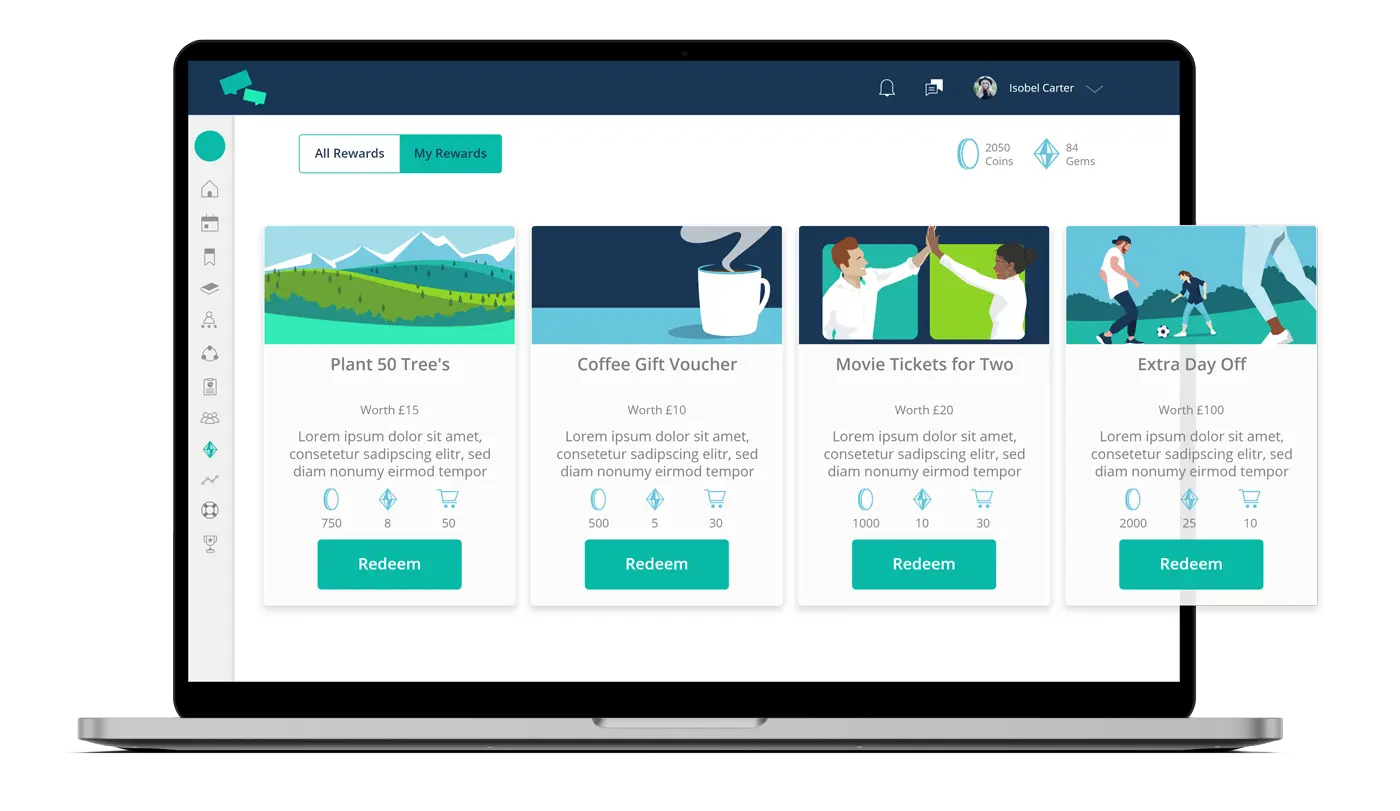
Last but not least, we have the reward centre. This is a dedicated space where learners can trade their virtual rewards (such as XP and badges) for real world rewards. For instance, you could offer:
- Experiences, vouchers or discounts
- A charitable donation on the employee’s behalf
- ‘Expert’ status on your learning management system
- A ‘day off’ or ‘free parking’ pass
The sky’s the limit. Whilst we would caution against being overly reliant on extrinsic motivation, the reward centre offers your learners something tangible in return for all their hard work.
It also adds meaning and potency to your other game mechanics. This could be an effective way to generate initial engagement, whilst creating a learning environment that cultivates meaningful levels of intrinsic motivation.
Final Word: Game Mechanics
There you have it. Twelve game mechanics designed to amplify learner engagement. Whilst XP, badges and leaderboards are now commonplace, embracing newer features like streaks or battles can take your gamification strategy to unprecedented heights.
As always, you should start by considering your business goals and learning objectives. This will help you to determine which game mechanics will best engage your learners. You can then refine and adjust your strategy accordingly.
Ultimately, game mechanics are a means to an end. They help you to motivate your learners and create a thriving learning environment. In turn, this should lead to a high-performance learning culture within your organisation.
If you can pull this off, then true business impact is sure to follow. Good luck gamers!

Thank you for reading. Here at Growth Engineering, we pride ourselves in being gamification gurus. We’ve collected our 20 years of gamification and learner engagement experience in one 55-page guidebook. Download it now!

